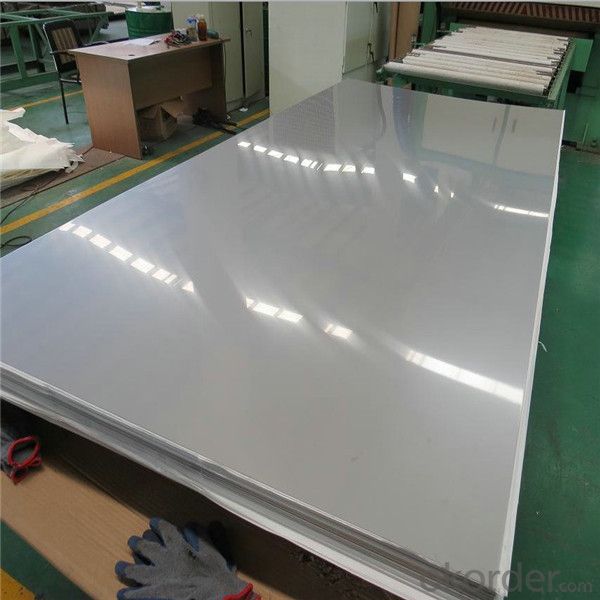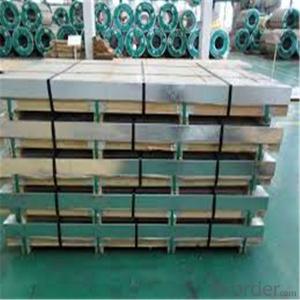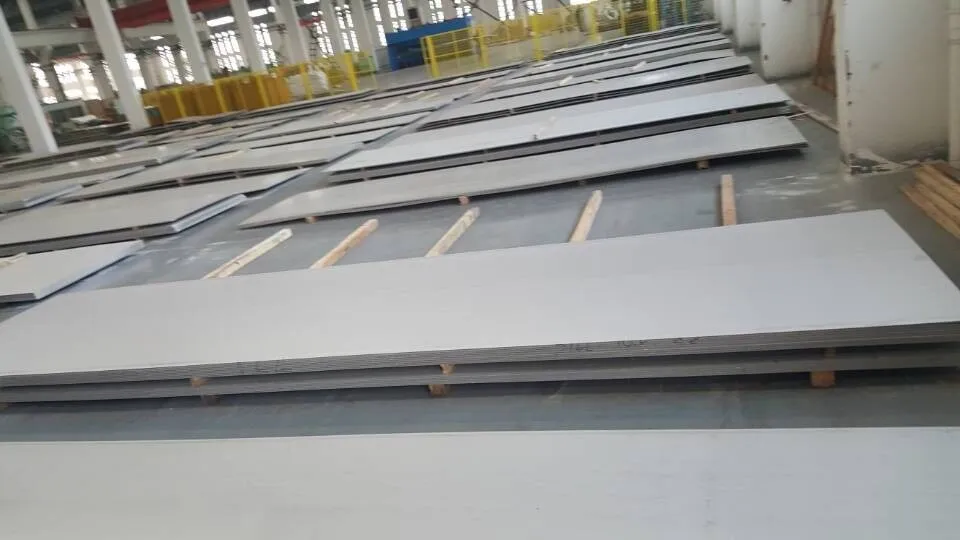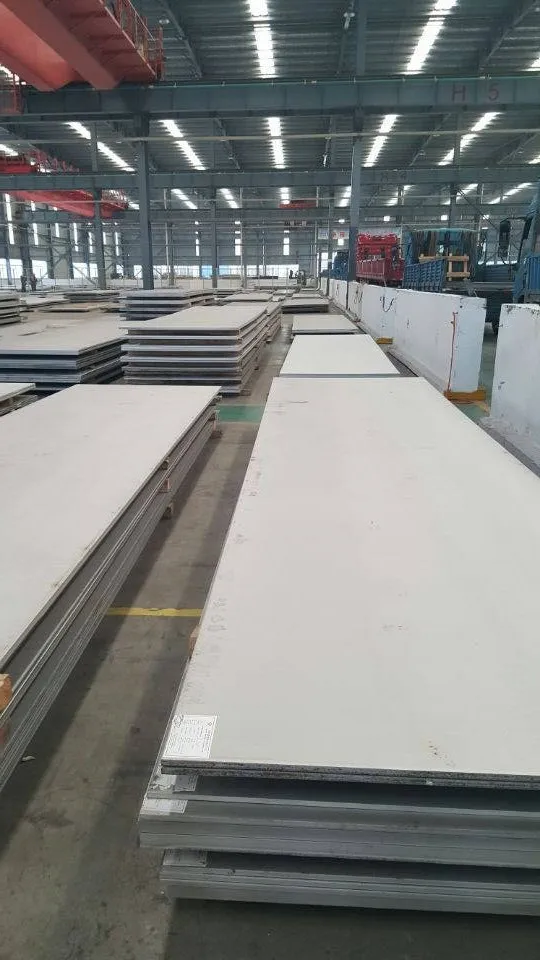AISI,DIN Standard and321 Stainless Steel Sheet Price
- Loading Port:
- Shanghai
- Payment Terms:
- TT OR LC
- Min Order Qty:
- 2 m.t.
- Supply Capability:
- 20000 m.t./month
OKorder Service Pledge
OKorder Financial Service
You Might Also Like
Item specifice
AISI,DIN Standard and 321 stainless steel sheet price
We are a professional manufacturer of stainless steel sheet. According to ASTM, JIS and AISI,GB, standards, steel enhances effectiveness and of quality control from selecting the raw materials, cutting, slitting, shearing, surface treatment, packing, exporting of the existing products.
Product Description
Details of Stainless Steel Sheet/Plate: > > > > > > > > > > > > > > > > >
Type | 321 stainless steel sheet price |
Thinckness | 3mm-50mm |
Widthness | 1000mm~2000mm or customized |
Length | 1000mm~6000mm or customized |
Brand name | TISCO,JISCO,BAOSTEEL,POSCO,LIANZHONG,ETC |
Standard | JIS, AISI, ASTM, GB, DIN, EN |
Material | 201/201/304/304L/316/316L/321/309S/310S/904L stainless steel sheet |
Surface | 2B,BA,HL,BK,NO.1,NO.4,8K,SB,etc |
Certificate | We accept the third inspections--SGS-BV etc. |
Application | Bridge, Shipbuilding,roofing,Car, etc |
Standard sheet sizes | 1000mm*2000mm,1250mm*2500mm,1219mm*2438mm,1500mm*3000mm We can produce other standard as customized |
Certification | BV,SGS ,CE |
surfuce:
| Finish | Thickness | Characteristics | Applications |
| No. 1 | 3.0mm~50.0mm | Finished by hot-rolling, annealing and pickling, characterized by white pickled surface | Chemical industry equipment, Industrial tanks |
| No. 2B | 0.3mm~6.0mm | Finished by heat treatment, pickling after cold rolling, followed by skin pass line to be more brighter and smooth surface | General Application Medical Instruments,Tableware |
| No. BA (Bright Annealed) | 0.5mm~2.0mm | Bright heat treatment after cold rolling | Kitchen utensil, kitchen ware,architectural purpose |
| No. 4 | 0.4mm~3.0mm | Polishing with No. 150 to No.180 mesh abrasivesThe most popular finishes | Milk & Food processing acilities, Hospital Equipment, Bath-tub |
| HL(Hair Line) | 0.4mm~3.0mm | Finished by continuous linear polishing | Architectural purposes, escalators, kitchen ware vehicles |
Products Show
These are the normal items, for the special requirements,we can also meet.


Our Advantages
• All products are made of high-quality imported raw materials.
• Our products are certified by ISO9001:2008 authentication quality systems.
• we are nominated as the AAA enterprise by Jiangsu government.
• Quick Response to Your Enquiry.
- Q:What are the different types of surface finishes for stainless steel sheets?
- There are several different types of surface finishes for stainless steel sheets, including brushed, mirror, embossed, bead blasted, and satin.
- Q:How do stainless steel sheets compare to other materials like aluminum or carbon steel?
- Stainless steel sheets, when compared to other materials like aluminum or carbon steel, offer several distinct advantages that make them a preferred choice in various industries. 1. Corrosion Resistance: Stainless steel sheets are highly resistant to corrosion, making them suitable for applications where exposure to moisture or corrosive environments is common. Aluminum, while also corrosion-resistant, is not as durable as stainless steel in harsh conditions, and carbon steel is prone to rusting. 2. Strength and Durability: Stainless steel sheets are renowned for their strength and durability. They have a higher tensile strength than aluminum, making them more resistant to bending and deformation. Carbon steel has similar strength characteristics but is more susceptible to corrosion, especially in exposed applications. 3. Heat Resistance: Stainless steel sheets can withstand high temperatures without losing their structural integrity. They have excellent heat resistance properties, making them ideal for applications involving heat transfer or exposure to extreme temperatures. Aluminum, on the other hand, has lower heat resistance, while carbon steel can lose strength and become brittle at high temperatures. 4. Hygiene and Cleanliness: Stainless steel sheets are non-porous and easy to clean, making them a popular choice in industries where hygiene is critical, such as food processing or medical equipment. Aluminum and carbon steel, in comparison, may have more porous surfaces that can harbor bacteria or contaminants. 5. Aesthetics: Stainless steel sheets offer a sleek and modern appearance that is often desired in architectural and design applications. They can be easily polished or finished to achieve a variety of decorative effects. Aluminum and carbon steel sheets, while also versatile, may not provide the same level of aesthetic appeal. However, it's worth noting that stainless steel sheets can be more expensive than aluminum or carbon steel due to their superior properties. The choice of material ultimately depends on the specific requirements of the application, including factors such as cost, strength, corrosion resistance, and aesthetics.
- Q:Can stainless steel sheets be used in high-pressure environments?
- High-pressure environments can certainly accommodate the use of stainless steel sheets. Renowned for remarkable strength and corrosion resistance, stainless steel proves itself fitting for tasks demanding high-pressure endurance. It remains intact and unyielding under immense pressure, never succumbing to deformation or fracture. Consequently, it emerges as an ideal choice for industries like oil and gas, chemical processing, and power generation, which frequently operate in high-pressure settings. Furthermore, stainless steel sheets retain their structural integrity and performance at elevated temperatures, bolstering their already impressive suitability for high-pressure situations.
- Q:How are stainless steel sheets made?
- Stainless steel sheets undergo a process called hot rolling to be produced. This starts by melting iron, nickel, chromium, and other elements in an electric arc furnace. The resulting mixture is then cast into large rectangular blocks known as slabs. The slabs are subjected to high temperatures and passed through a series of hot rolling mills. These mills consist of large rollers that gradually decrease the slab's thickness while increasing its length and width. As the slab goes through each rolling mill, it is constantly squeezed by the rollers, resulting in a thinner and longer sheet. Following the hot rolling process, the stainless steel sheet goes through annealing. This involves heating the sheet to a specific temperature and then allowing it to cool slowly. This process helps release internal stresses and enhance the material's mechanical properties. Next comes pickling, where the sheet is submerged in an acid solution to eliminate any surface impurities and oxides. This improves the appearance and corrosion resistance of the stainless steel. Once the pickling process is done, the sheet undergoes cold rolling. Cold rolling further decreases the sheet's thickness and improves its surface finish. This is done at room temperature, increasing the hardness and strength of the stainless steel. Lastly, the stainless steel sheet undergoes various finishing processes. These may include cutting to size, leveling, surface polishing, and coating to enhance appearance or protect against corrosion. In conclusion, the manufacturing process of stainless steel sheets involves a combination of melting, casting, hot rolling, annealing, pickling, cold rolling, and finishing processes. This ensures that the final product meets the desired specifications in terms of thickness, strength, and surface finish.
- Q:What's the surface of the 304 stainless steel matte board?
- NO.2B gloss is stronger than NO.2D NO.2D, after processing, through the polishing roller, eventually a slight cold rolling, in order to obtain proper luster. This is the most commonly used surface finish, which can also be used as the first step in polishing. General timberBA is bright as a mirror but has no standard, but is usually bright annealed and has a high surface reflectivity. Building materials, Kitchenware
- Q:Why do galvanized and stainless steel sheets buy more expensive than thin ones?
- First of all, galvanized sheet or stainless steel is made of thick hot-rolled billets by cold rolling, so the thickness is generally thinner, and the more processing times, the greater the cost. That's why the thinner is thicker than the expensive one. Once again, the plate has a negative range of thickness, not necessarily all feet thick, and when buying a flat, with suppliers to explain your negative range requirements.
- Q:How do you prevent fingerprints on stainless steel sheets?
- There are several steps you can take to prevent fingerprints on stainless steel sheets: 1. Start by thoroughly cleaning the surface of the stainless steel sheets using a mild detergent or stainless steel cleaner. This will eliminate any existing fingerprints or smudges. 2. When handling the sheets, wear gloves to avoid transferring natural oils from your hands onto the surface. Cotton or nitrile gloves are recommended as they offer a good grip and leave no residue. 3. Minimize direct contact with the stainless steel surface as much as possible. This can be achieved by using specialized tools or wearing gloves when handling and installing the sheets. 4. Consider applying a protective coating specifically designed for stainless steel. These coatings create a barrier that repels fingerprints and simplifies the cleaning process. Be sure to follow the manufacturer's instructions for proper application. 5. Use a soft microfiber cloth when cleaning the stainless steel sheets. Microfiber is gentle on the surface and helps prevent streaks and fingerprints. Avoid using abrasive materials or rough scrubbers that can damage the stainless steel finish. 6. Establish a regular cleaning routine to remove any fingerprints or smudges that may appear over time. Dilute a mild detergent in warm water and use a soft cloth or sponge to wipe down the stainless steel sheets. Rinse with clean water and thoroughly dry. By following these preventive measures and cleaning techniques, you can significantly reduce the visibility of fingerprints on stainless steel sheets and keep them looking clean and flawless.
- Q:Can stainless steel sheets be recycled?
- Yes, stainless steel sheets can be recycled. Stainless steel is a highly recyclable material, and its recycling rate is one of the highest among all materials. When stainless steel sheets reach the end of their useful life, they can be collected and sent to a recycling facility. The recycling process involves melting down the stainless steel sheets and reforming them into new products, without losing their properties or quality. This makes stainless steel a sustainable and environmentally friendly material choice. Recycling stainless steel also helps to conserve natural resources, reduce energy consumption, and minimize waste.
- Q:What is the maximum size available for stainless steel sheets?
- The maximum size available for stainless steel sheets depends on several factors, including the manufacturing capabilities of the supplier and the specific requirements of the customer. Stainless steel sheets are typically available in standard sizes, which can vary depending on the thickness and grade of the stainless steel. In general, stainless steel sheets can be found in sizes ranging from 4 feet by 8 feet (1220mm x 2440mm) to larger sizes such as 5 feet by 10 feet (1524mm x 3048mm). However, it is also possible to find custom sizes or oversized sheets that exceed these dimensions, especially for industrial or specialized applications. It is important to note that larger sizes may come with additional challenges, such as increased weight and handling difficulties. Additionally, the availability of specific sizes may vary among suppliers, so it is recommended to consult with a stainless steel sheet supplier or manufacturer for the exact maximum size options they offer.
- Q:Can stainless steel sheets be used for mezzanine flooring?
- Yes, stainless steel sheets can be used for mezzanine flooring. Stainless steel is a durable and corrosion-resistant material, making it suitable for high traffic areas like mezzanine floors. It offers strength and stability, making it a popular choice for industrial and commercial applications.
1. Manufacturer Overview |
|
|---|---|
| Location | |
| Year Established | |
| Annual Output Value | |
| Main Markets | |
| Company Certifications | |
2. Manufacturer Certificates |
|
|---|---|
| a) Certification Name | |
| Range | |
| Reference | |
| Validity Period | |
3. Manufacturer Capability |
|
|---|---|
| a)Trade Capacity | |
| Nearest Port | |
| Export Percentage | |
| No.of Employees in Trade Department | |
| Language Spoken: | |
| b)Factory Information | |
| Factory Size: | |
| No. of Production Lines | |
| Contract Manufacturing | |
| Product Price Range | |
Send your message to us
AISI,DIN Standard and321 Stainless Steel Sheet Price
- Loading Port:
- Shanghai
- Payment Terms:
- TT OR LC
- Min Order Qty:
- 2 m.t.
- Supply Capability:
- 20000 m.t./month
OKorder Service Pledge
OKorder Financial Service
Similar products
New products
Hot products
Hot Searches
Related keywords



































